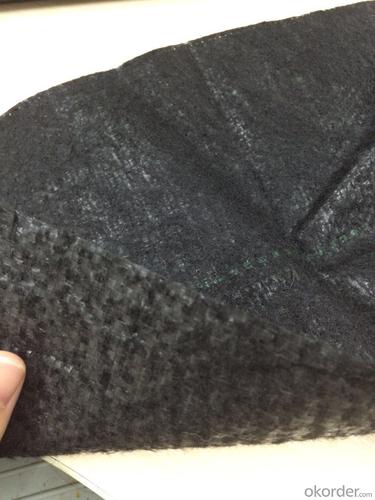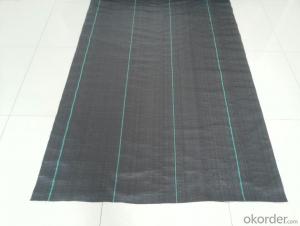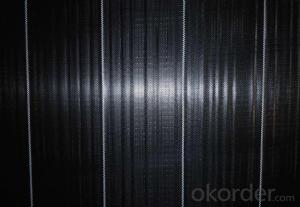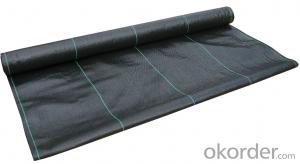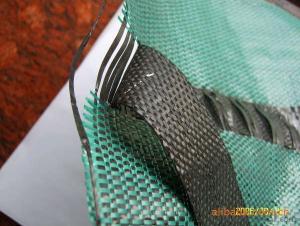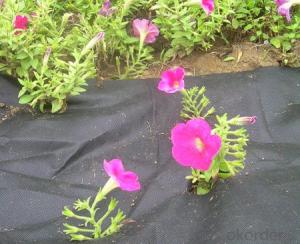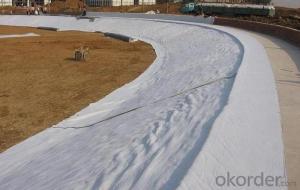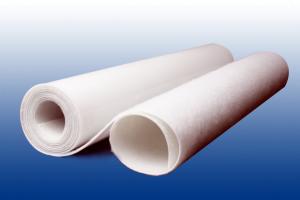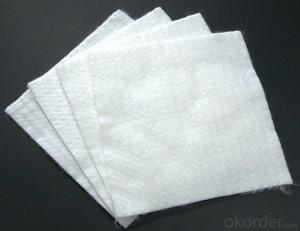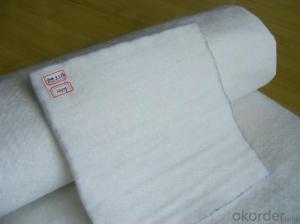Monofilament Geotextile PP Woven Fabric/Groundcover Fabric/Weed Control
- Loading Port:
- China main port
- Payment Terms:
- TT OR LC
- Min Order Qty:
- 5000 m²
- Supply Capability:
- 1000000 m²/month
OKorder Service Pledge
OKorder Financial Service
You Might Also Like
Introduction
Geotextiles are composed from synthetic polypropylene/polyester fibres through a mechanical process of needling the fabric and adding, when necessary, a thermo fused process, resulting in a uniform porous structure with excellent tensile strength and chemical deterioration.
Type: 1. Wovens & knitted: use various fibre types (e.g. monofilament, multi-filament, split extruded film) in different combinations. 2. Non-wovens: staple or continuous fibres that are heat treated or needlepunched to “fix” fibres relative to each other.
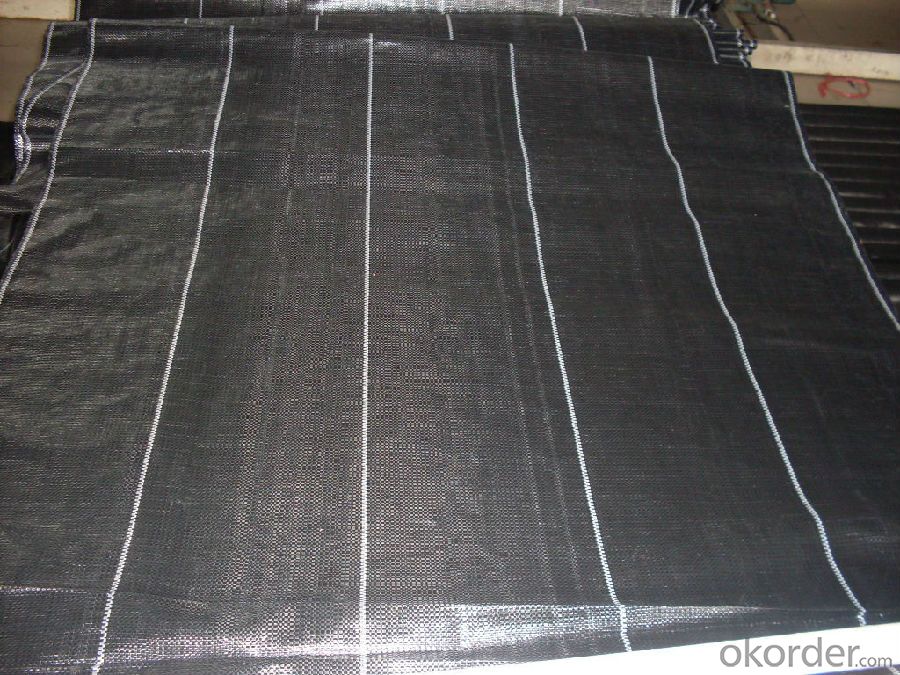

Specification
1) Weight / Mass: 75g/m2-400g/m2 .
2) Width: Within 8 m (1m-8m)
3) Length: 50m-100m/roll (as request)
4) Material: PP
5) Color: Black , white , grey, others
6) Certificate: CE/ISO9001, ISO14001 .
7) Manufacturing method: nonwoven / woven.
8) The biggest geotextile manufacturer/factory in China for many years . The equipment is introduced from Germany.
9) This geotextile can be made of polypropylene (PP).
10) The mass is available from 75g/m² to 400g/m² and the width available from 1.0m-8m, monolayer or multilayer (reinforcement geotextiles), long fiber or short fiber.
11) Color: all kinds of color are available. The annual production ability is 10 million square meters.
12) The fabric can also be heat treated by infrared at customer's requirements. Our geotextile are UV stabilized to give protection against aging under exposure to natural ultra-violet light.
Application
Major functions: Separation, filtration, drainage, reinforcement, protection, and liquid barrier
1) Filtration
The filtration layer of the dykes, river canal, seacoast, concrete slope, retaining walls. At the same time of preventing the clay granule from passing, it allows the water and the gas pass through freely.
2) Separation:
The isolation of the railway dregs and the roadbed, roadbed and the soft base, surface of the airdrome and parking lot and the groundsill, different dam materials. It isolates the soil and the gravel of two kinds different granule pathway from the groundsill or other buildings.
3 )Reinforcement:
The highway, railway, soil-stone dam, breakwater, airport, backfill soil of retaining wall, slope protection, etc in which distributes the earth stress, prevents the side-displacement of the earth body and improves the earth body stability.
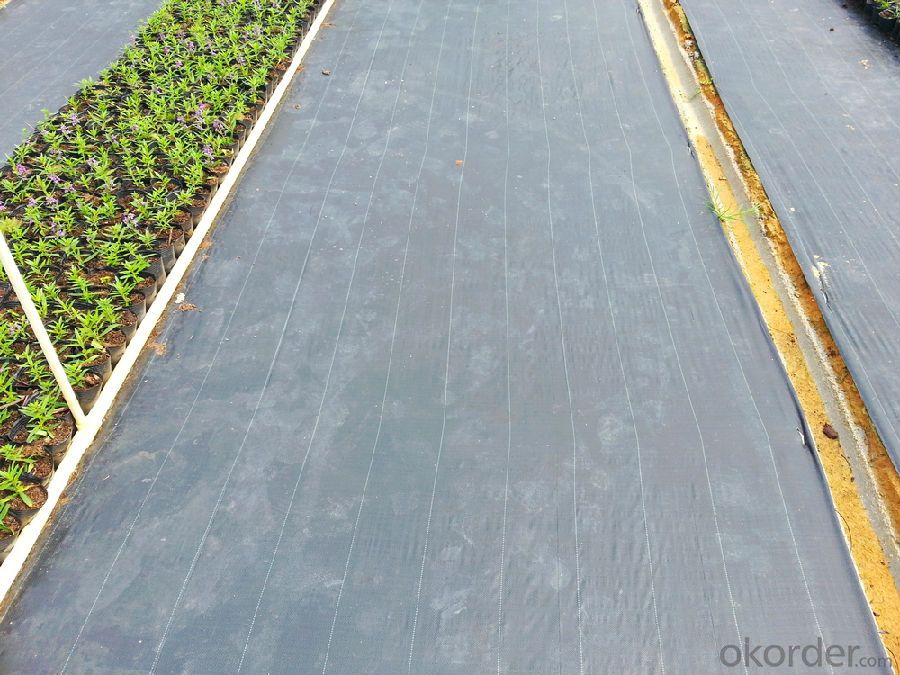
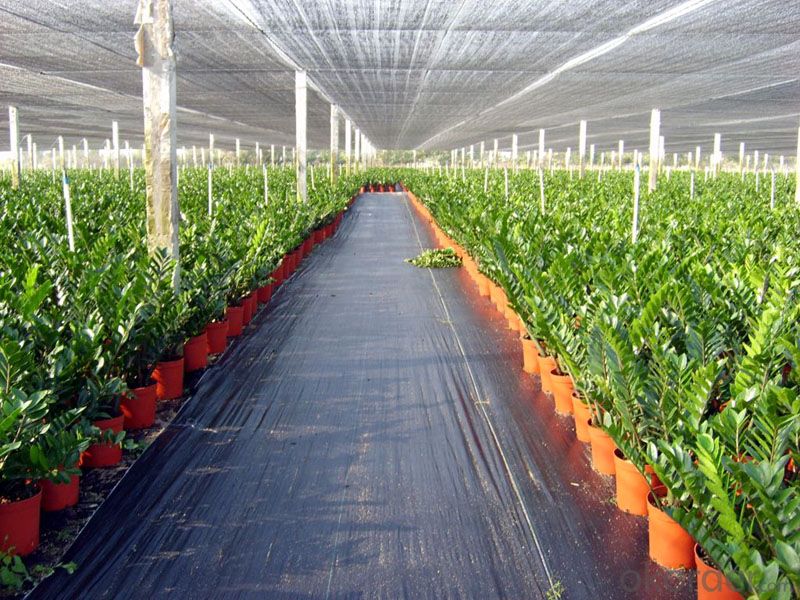
FAQ:
Q1: What is your minimum order quantity?
A:The minimum order quantity is 5000 ,but it is negotiable.
Q2:What is your payment terms?
A: T/T,Western Union,Paypal,L/C...
Q3:What is your delivery time?
A:Production time usually costs 2-20 days.
Waiting to cooperate with you!
- Q: How do geotextiles contribute to soil separation?
- Geotextiles contribute to soil separation by acting as a barrier between different soil layers, preventing them from mixing or interacting. This separation helps to maintain the stability and integrity of the soil structure, prevents erosion, and enhances the overall performance of the soil in various construction and landscaping applications.
- Q: Can geotextiles be used in embankment reinforcement?
- Yes, geotextiles can be used in embankment reinforcement. Geotextiles are commonly used in civil engineering projects to improve the stability and performance of embankments. They provide reinforcement by distributing loads and reducing soil erosion, thereby enhancing the overall strength and durability of embankments.
- Q: What are the key factors affecting the creep behavior of geotextiles?
- The key factors affecting the creep behavior of geotextiles include the material properties of the geotextile itself, such as its tensile strength, elongation capacity, and viscoelastic behavior. The load applied to the geotextile, including the magnitude and duration, also plays a significant role in its creep behavior. Environmental conditions, such as temperature, moisture, and UV exposure, can further influence the creep performance of geotextiles. Additionally, the installation and stress transfer mechanisms between the geotextile and adjacent soils or structures can affect its creep behavior.
- Q: What are the environmental benefits of using geotextiles?
- Geotextiles offer several environmental benefits, such as erosion control by stabilizing soil and preventing sediment runoff, enhancing water filtration and drainage systems, reducing the need for chemical herbicides and pesticides, and promoting the growth of vegetation. Additionally, they can help in the restoration and protection of ecosystems, reduce construction waste by extending the lifespan of infrastructure, and minimize the use of non-renewable materials like aggregates.
- Q: Does geotextile affect water purification?
- Do not know what you use after the purification of water, if not drinking water, I think it will not affect the water quality, the general purpose of water purification, geotextile will not affect, because the geotextile material is polyester or polypropylene, In the chemical nature of relatively stable, no changes in room temperature conditions, so there will not be any impact on water quality
- Q: How do geotextiles help with subgrade stabilization in road construction?
- Geotextiles help with subgrade stabilization in road construction by acting as a barrier between the subgrade and the overlying layers of the road. They distribute and reduce the load from the traffic, preventing the subgrade from becoming weak or uneven. Additionally, geotextiles can separate different soil layers, preventing them from mixing and improving the overall stability and strength of the road.
- Q: How do geotextiles aid in the reduction of lateral spreading?
- Geotextiles aid in the reduction of lateral spreading by providing reinforcement and stability to soil structures. These textiles are designed to have high tensile strength and are placed horizontally within the soil to act as a barrier against the lateral movement of soil particles. This helps to distribute stress and prevent the soil from shifting laterally, thereby reducing the potential for slope failure or landslides.
- Q: What is the geotextile for ditch drainage?
- Generally used polyester short wire geotextile, the specifications are 300g per square meter
- Q: Specification for Lap Length of Geotextile with Two Cloth
- 10 cm or so can be, collar Xiang new materials for your answer
- Q: How are geotextiles installed?
- Geotextiles are installed by first preparing the site by removing any debris and ensuring the surface is level. The geotextile fabric is then laid out over the designated area, with overlapping edges to ensure full coverage. It is secured in place using stakes or other appropriate methods. Care is taken to avoid any wrinkles or folds in the fabric, ensuring a smooth surface. Finally, the geotextile is covered with the desired material, such as soil or gravel, to provide additional support and protection.
Send your message to us
Monofilament Geotextile PP Woven Fabric/Groundcover Fabric/Weed Control
- Loading Port:
- China main port
- Payment Terms:
- TT OR LC
- Min Order Qty:
- 5000 m²
- Supply Capability:
- 1000000 m²/month
OKorder Service Pledge
OKorder Financial Service
Similar products
Hot products
Hot Searches
Related keywords






